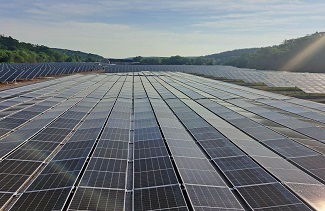
How Stainless Steel Plates Strengthening Renewable Energy Technologies
- Views:0
- Author:
- Publish Time:2025-07-09
- Origin:
As the world increasingly focuses on renewable energy and sustainable technologies, the need for materials that can support this shift is crucial. Stainless steel plates, known for their strength, durability, and resistance to corrosion, are becoming essential in the advancement of electric vehicles (EVs), solar energy systems, and wind power. This article will examine the significant role stainless steel plates play in promoting clean energy technologies.

Electric Vehicles: Enhancing Battery Technology and Vehicle Structure
The electric vehicle market is growing rapidly as both governments and consumers advocate for more environmentally friendly transportation. A major challenge in EV production is creating efficient, long-lasting batteries and durable, lightweight vehicle structures. Stainless steel plates offer several advantages in these areas.
Battery Systems: Stainless steel is used to construct battery casings and enclosures because of its excellent resistance to heat and corrosion. These properties ensure the safety and longevity of battery cells, especially in harsh conditions with temperature fluctuations or chemical exposure. The structural integrity of stainless steel also protects batteries from external damage during collisions, enhancing overall EV safety.
Lightweight Vehicle Structures: Stainless steel plates are used to reduce the weight of EVs without sacrificing strength. As manufacturers aim to improve the energy efficiency of EVs, lightweight stainless steel components are crucial for enhancing performance and extending the vehicle's range.
Solar Energy: Providing Durable and Sustainable Infrastructure
Solar energy systems require durable and long-lasting materials to withstand exposure to the elements over many years. Stainless steel plates are increasingly used in various components of solar energy infrastructure, including support structures, mounting systems, and reflective panels.
Corrosion Resistance: A key advantage of stainless steel in solar power systems is its ability to resist corrosion in outdoor environments, whether exposed to rain, snow, or extreme heat. This makes stainless steel ideal for solar farms, especially those in coastal or desert regions where harsh conditions can degrade other materials.
Efficiency in Concentrated Solar Power (CSP) Systems: Stainless steel plates improve the efficiency of concentrated solar power (CSP) systems, which use reflective surfaces to focus sunlight onto a receiver that generates heat. By using stainless steel plates with advanced surface treatments, CSP systems can enhance the reflectivity and longevity of these surfaces, thereby increasing energy generation efficiency.
Wind Power: Ensuring Reliability in Turbine Construction
Wind energy is a rapidly growing renewable energy sector, and the construction of wind turbines requires materials that can endure extreme wind loads, saltwater corrosion, and long-term wear. Stainless steel plates are extensively used in manufacturing wind turbine components, including nacelles, towers, and internal structures.
Offshore Wind Turbines: For offshore wind turbines, stainless steel’s resistance to saltwater corrosion and high humidity is essential. Turbines in these environments face constant exposure to harsh elements, and using stainless steel plates ensures they remain operational for extended periods without frequent maintenance.
Strength-to-Weight Ratio: Stainless steel's strength-to-weight ratio contributes to the overall stability and durability of wind turbines, allowing them to be built taller and more powerful without compromising safety. As wind energy technology advances, stainless steel plates will remain critical in supporting larger, more efficient turbines.
Sustainability and Recyclability
A significant advantage of stainless steel plates in the renewable energy sector is their sustainability. Stainless steel is 100% recyclable, meaning it can be reused in future projects without losing its properties. This aligns with the environmental goals of the renewable energy industry, which prioritizes reducing waste and promoting a circular economy.
By choosing stainless steel plates for solar, wind, and electric vehicle applications, manufacturers can ensure their materials contribute to a cleaner, greener future. The long lifespan of stainless steel also reduces the need for frequent replacements, further lowering the environmental impact of renewable energy infrastructure.
Advanced Surface Treatments
In renewable energy applications, stainless steel plates can benefit from advanced surface treatments that improve their performance in harsh conditions. For example, anti-reflective coatings can enhance the efficiency of solar panels by maximizing sunlight absorption, while anti-corrosion treatments can extend the lifespan of wind turbines and EV components.
These innovations allow stainless steel plates to adapt to the evolving demands of the renewable energy industry, ensuring they remain at the forefront of new technologies and systems designed to combat climate change.
Conclusion
As the world transitions to cleaner energy solutions, stainless steel plates are emerging as a vital material in developing electric vehicles, solar power systems, and wind turbines. Their unique combination of strength, durability, and corrosion resistance makes them an ideal partner for the renewable energy sector. From producing lightweight electric vehicles to constructing durable solar farms and wind turbines, stainless steel plates are helping to power a sustainable energy future.















